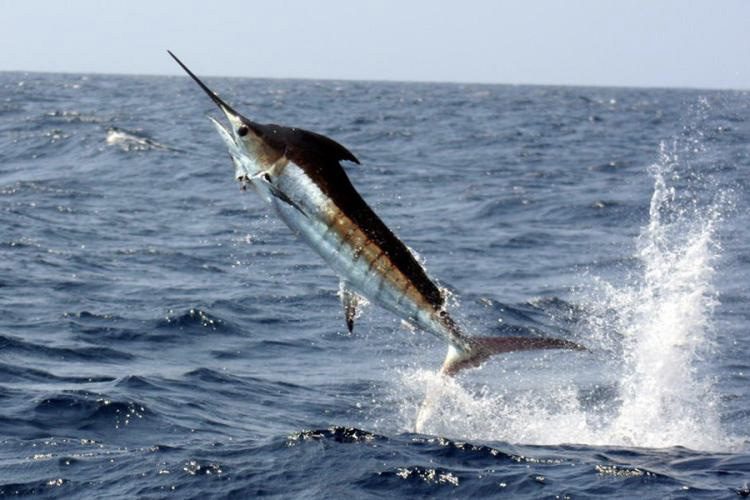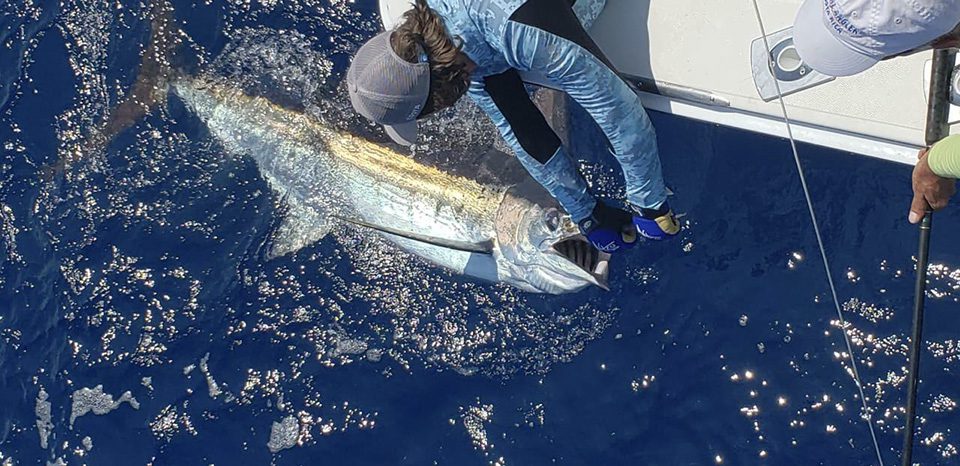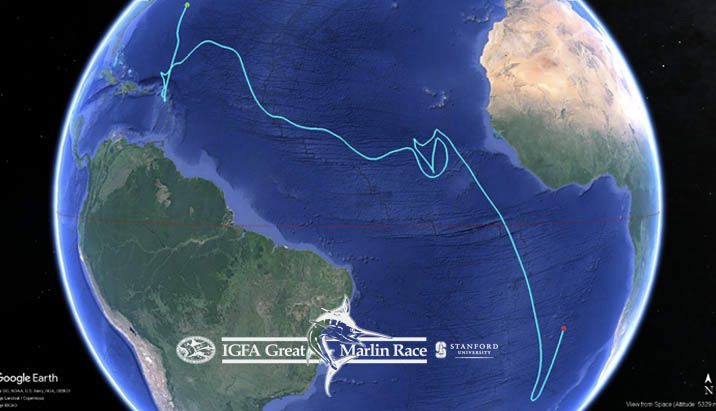The International Game Fish Association (IGFA) is most well-known for keeping track of record fish. They also do research. Their signature billfish research initiative is the IGFA Great Marlin Race, and it collects some awesome information about marlin and their pelagic travels.
In the Great Marlin Race, fishing teams sponsor and tag marlin during tournaments all over the world. The fish are released, and the satellite tags track the fish for a maximum of 240 days before popping out of the fish and floating to the surface to transmit data to satellites. Data collected includes where the fish travelled, its diving behavior and the water temperatures it inhabited.
The winner of IGFA’s Great Marlin Race presented by Costa in partnership with Stanford University is the tag that travels the greatest distance each year. But the real winners are anglers and fish. The data collected can be used by fisheries managers to protect billfish fisheries for the future. The data also tells some amazing stories of the wide travels of the world’s favorite big-game fish.
Here are a couple recent highlights of the program:
Exiled in the South Atlantic
A 175-pound blue marlin tagged during last July’s Bermuda Triple Crown lost its tag on March 19 an incredible 4,477 nautical miles from where it was deployed. The fish is estimated to have traveled 8,786 nautical miles in a migration from Bermuda, south to waters off Puerto Rico and then to the middle of the South Atlantic between Africa and South America. The tag popped up near St. Helena, one of the most remote islands in the world, the British territory where Napolean Bonaparte was exiled in 1815.
Amazingly, it was just the third longest blue marlin track recorded in the IGFA Great Marlin Race. The tag was sponsored by Mike Verzaleno and deployed aboard the Reel Steel, captained by Jason Parker.
Hawaiian Vacation
A 285-pound blue marlin tagged during the Hawaiian International Billfish Tournament last August in Kona swam for 152 days to travel 2,615 nautical miles south into the middle of the South Pacific Ocean. It was estimated to have traveled a total of 7,032 nautical miles, and the tag held some pretty cool details. This is a catchable fish. It spent about 50 percent of its time within 33 feet of the surface in water temperatures that ranged from 77 to 84 degrees. Its deepest dive was to 1,476 feet, where the water temperature was 57 degrees in December.
This tag was sponsored by Tim and Heidi McBride and deployed aboard the Maverick.
The Long Way Home
In January, a tag affixed to 60-pound white marlin in the Bahamas popped up just 141 nautical miles from where the fish was tagged last June. But there’s more to the story. Over the 240 days the fish wore the tag, it swam all the way up the coast of the Eastern U.S. to hang out for a while near the Continental Shelf off Cape Cod. Then it hung a right and eased way out into the middle of the North Atlantic before making its way back to the Bahamas. That little guy must like to spend summers in the tropics. The fish’s estimated tack length was 5,464 nautical miles.
This tag was part of the Bass Pro Shops and Cabela’s Outdoor Fund grant, and it was deployed aboard the Shark Bytecaptained by Rich Barrett and owned by Pete Cherasia.
For more stories from The IGFA Great Marlin Race, go to igfa.org.




